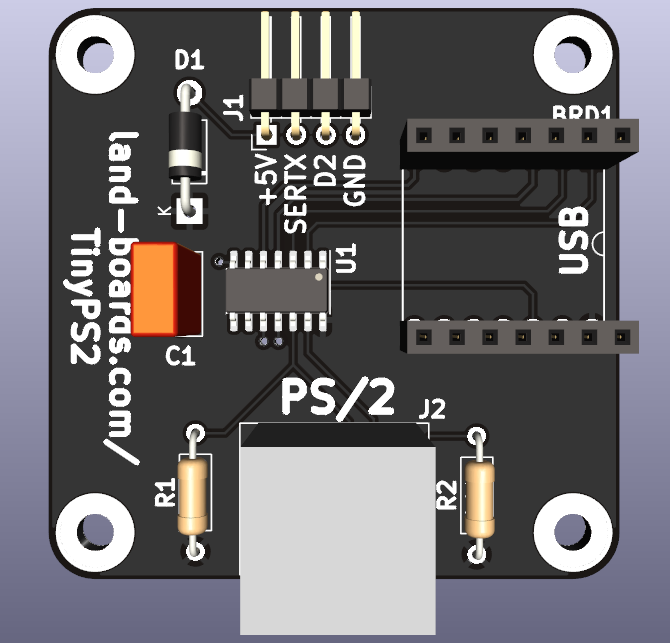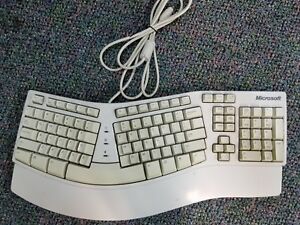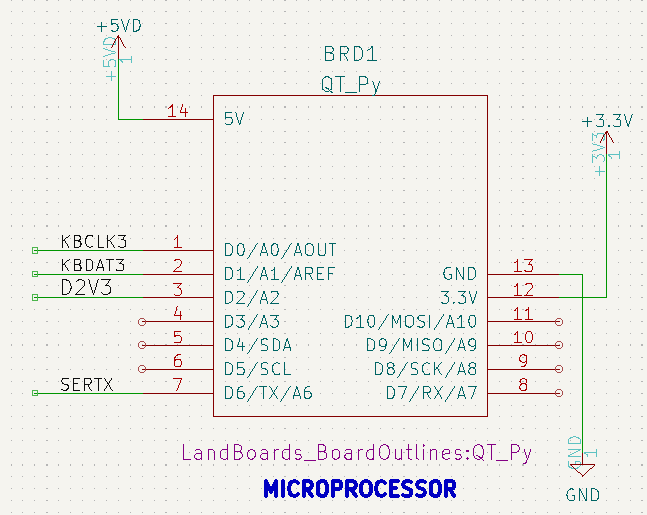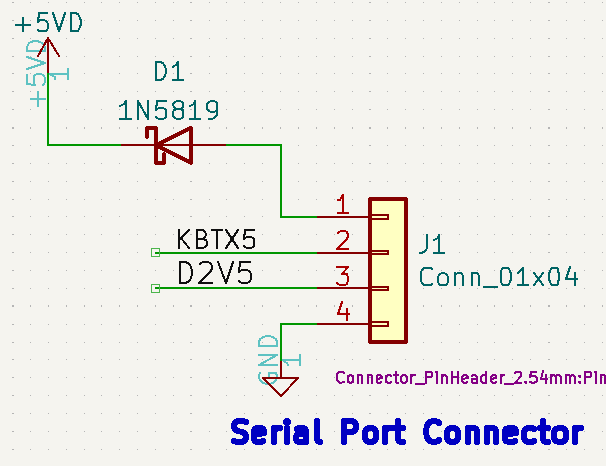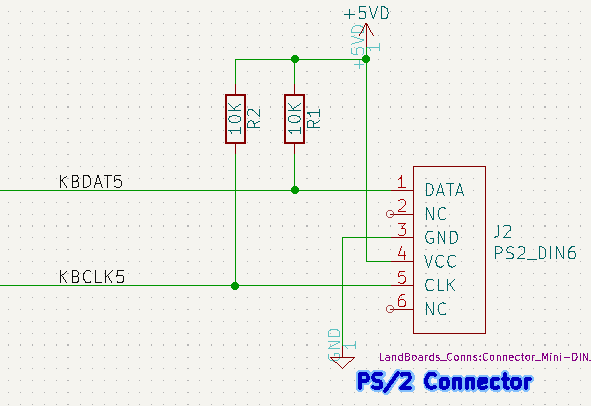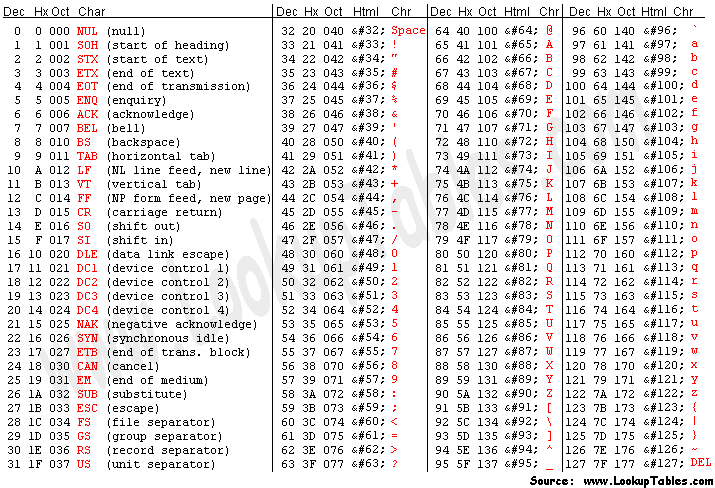Difference between revisions of "TinyPS2"
Jump to navigation
Jump to search
Blwikiadmin (talk | contribs) |
Blwikiadmin (talk | contribs) |
||
| (140 intermediate revisions by the same user not shown) | |||
| Line 1: | Line 1: | ||
| − | [[File: | + | See [[TinyPS2 Revs 1-3]] for ATTiny85 based build |
| + | |||
| + | [[File:TinyPS2_Front_Rev4_3D.png]] | ||
| + | |||
| + | == Introduction == | ||
| + | |||
| + | It is getting difficult to find ASCII serial keyboards for use in Retro-Computer projects. This card fills that need. The card is a PS/2 keyboard to TTL Level Serial adapter. PS/2 keyboards are still widely available. | ||
| + | |||
| + | [[file:Keyboard_PS2_MicrosoftNatural.jpg]] | ||
== Features == | == Features == | ||
| − | * | + | * [[QT_Py_(RP2040_based)|QT Py (RP2040 based)]] |
| − | * | + | ** Run at 125 MHz |
| − | * 115,200 baud | + | ** 2MB of In System Programmable (ISP) flash |
| + | ** 264KB of SRAM | ||
| + | * 115,200 baud serial | ||
| + | ** 57,600-250,000 are build time options | ||
* 49x49mm ODAS form factor | * 49x49mm ODAS form factor | ||
| − | * 4-40 mounting holes | + | * (4) 4-40 mounting holes |
| + | * 3.3V or 5V operation | ||
| + | * Current measurement | ||
| + | ** TBD @ 5V (without keyboard) | ||
| + | ** TBD @ 5V (including keyboard) | ||
| + | ** TBD @ 3.3V (including keyboard) | ||
| + | *** Does not require a keyboard that works at 3.3V | ||
| + | |||
| + | === CPU Connections === | ||
| + | |||
| + | [[file:TinyPS2_CPU_Rev4_Conns.PNG]] | ||
| + | |||
| + | <pre> | ||
| + | #define DATAPIN 27 | ||
| + | #define IRQPIN 26 | ||
| + | </pre> | ||
== Connectors == | == Connectors == | ||
| Line 13: | Line 39: | ||
=== J1 - TTL Serial Connector === | === J1 - TTL Serial Connector === | ||
| − | # | + | [[file:TinyPS2_J1_Rev4_Conns.PNG]] |
| + | |||
| + | # VCC (pin nearest to J1 silkscreem) | ||
# SERTX | # SERTX | ||
# N/C | # N/C | ||
| Line 22: | Line 50: | ||
* Standard PS/2 Mini-DIN-6 connector | * Standard PS/2 Mini-DIN-6 connector | ||
| − | + | [[file:TinyPS2_J2_Rev4_Conns.PNG]] | |
| − | + | == Firmware Build Card Rev 4 == | |
| − | |||
| − | |||
| − | |||
| − | # | + | [[file:asciifull.png]] |
| − | # | + | |
| − | + | === Arduino === | |
| − | + | ||
| − | + | * Card rev 4 uses a QTPy or XAIO RP2040 CPU | |
| − | + | * Arduino Library | |
| + | ** [https://github.com/techpaul/PS2KeyAdvanced PS2KeyAdvanced] | ||
| + | * [https://github.com/land-boards/lb-Arduino-Code/blob/master/LBCards/TinyPS2/TinyPS2_PCB_Rev4_AdvKbd/TinyPS2_PCB_Rev4_AdvKbd.ino TinyPS2_PCB_Rev4_AdvKbd] - code | ||
| + | <pre> | ||
| + | #define DATAPIN 27 | ||
| + | #define IRQPIN 26 | ||
| + | </pre> | ||
| + | |||
| + | * Example code produces warning | ||
| + | |||
| + | <pre> | ||
| + | WARNING: library PS2KeyAdvanced claims to run on avr, sam, samd1, stm32, esp32 architecture(s) and may be incompatible with your current board which runs on rp2040 architecture(s). | ||
| + | Sketch uses 82336 bytes (0%) of program storage space. Maximum is 16777216 bytes. | ||
| + | Global variables use 43096 bytes (15%) of dynamic memory, leaving 227240 bytes for local variables. Maximum is 270336 bytes. | ||
| + | </pre> | ||
| + | |||
| + | * Code works well! | ||
| + | |||
| + | === C++ === | ||
| + | |||
| + | * [https://github.com/tvlad1234/pico-ps2Driv pico-ps2Driv] - SDK C code | ||
| + | |||
| + | === CircuitPython === | ||
| − | + | * CircuitPython support issues | |
| + | ** [https://docs.circuitpython.org/en/latest/shared-bindings/ps2io/index.html PS/2 Library] - Not in Pico core modules | ||
| − | + | <pre> | |
| + | >>> import ps2io | ||
| + | Traceback (most recent call last): | ||
| + | File "<stdin>", line 1, in <module> | ||
| + | ImportError: no module named 'ps2io' | ||
| + | </pre> | ||
== Schematic == | == Schematic == | ||
| Line 46: | Line 99: | ||
== Issues == | == Issues == | ||
| − | * | + | * [[TinyPS2_Revs_1-3|Revs 1-3 are documented here]] |
| − | ** | + | |
| − | * | + | === Rev 4 === |
| − | ** | + | |
| + | * Changed CPU | ||
| + | ** Was 8 MHz ATTiny85 | ||
| + | ** Changed to QT PY or XAIO | ||
| + | * Changed pin usage | ||
| + | * Uses Hardware Transmitter in CPU | ||
| + | * Keyboard runs at 5V | ||
| + | * CPU runs at 3.3VV | ||
| + | * 3.3V to 5V level shifter | ||
== Assembly Sheet == | == Assembly Sheet == | ||
| − | * [[TinyPS2 Assembly Sheet]] | + | * [[TinyPS2 Rev 4 Assembly Sheet]] |
Latest revision as of 16:51, 15 August 2022
See TinyPS2 Revs 1-3 for ATTiny85 based build
Contents
Introduction
It is getting difficult to find ASCII serial keyboards for use in Retro-Computer projects. This card fills that need. The card is a PS/2 keyboard to TTL Level Serial adapter. PS/2 keyboards are still widely available.
Features
- QT Py (RP2040 based)
- Run at 125 MHz
- 2MB of In System Programmable (ISP) flash
- 264KB of SRAM
- 115,200 baud serial
- 57,600-250,000 are build time options
- 49x49mm ODAS form factor
- (4) 4-40 mounting holes
- 3.3V or 5V operation
- Current measurement
- TBD @ 5V (without keyboard)
- TBD @ 5V (including keyboard)
- TBD @ 3.3V (including keyboard)
- Does not require a keyboard that works at 3.3V
CPU Connections
#define DATAPIN 27 #define IRQPIN 26
Connectors
J1 - TTL Serial Connector
- VCC (pin nearest to J1 silkscreem)
- SERTX
- N/C
- GND
J2 - PS/2
- Standard PS/2 Mini-DIN-6 connector
Firmware Build Card Rev 4
Arduino
- Card rev 4 uses a QTPy or XAIO RP2040 CPU
- Arduino Library
- TinyPS2_PCB_Rev4_AdvKbd - code
#define DATAPIN 27 #define IRQPIN 26
- Example code produces warning
WARNING: library PS2KeyAdvanced claims to run on avr, sam, samd1, stm32, esp32 architecture(s) and may be incompatible with your current board which runs on rp2040 architecture(s). Sketch uses 82336 bytes (0%) of program storage space. Maximum is 16777216 bytes. Global variables use 43096 bytes (15%) of dynamic memory, leaving 227240 bytes for local variables. Maximum is 270336 bytes.
- Code works well!
C++
- pico-ps2Driv - SDK C code
CircuitPython
- CircuitPython support issues
- PS/2 Library - Not in Pico core modules
>>> import ps2io Traceback (most recent call last): File "<stdin>", line 1, in <module> ImportError: no module named 'ps2io'
Schematic
Issues
Rev 4
- Changed CPU
- Was 8 MHz ATTiny85
- Changed to QT PY or XAIO
- Changed pin usage
- Uses Hardware Transmitter in CPU
- Keyboard runs at 5V
- CPU runs at 3.3VV
- 3.3V to 5V level shifter
